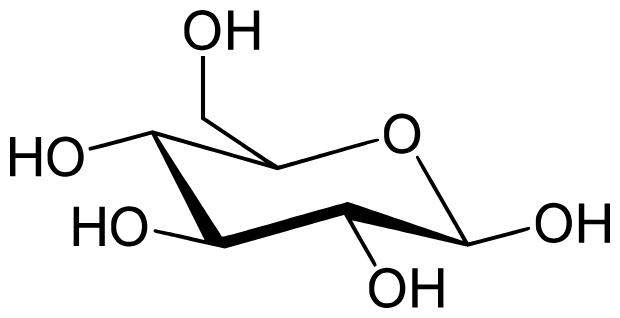Glucocerebroside Analysis Service
What is Glucocerebroside?
Glucocerebroside (Glucosylceramide, GlcCer) is a glycosphingolipid composed of a ceramide backbone and a glucose residue linked through a β-glycosidic linkage. The ceramide consists of a sphingosine base and a fatty acid chain. The glucose molecule is attached to the ceramide backbone, giving GlcCer its unique properties. Glucocerebroside is primarily found in cell membranes, particularly in high concentrations within the lysosomes of various cell types.
Analyzing Glucocerebroside is crucial due to its involvement in various biological processes and its significance in disease development. Understanding the quantity, composition, and distribution of GlcCer within cells and tissues provides valuable insights into cellular signaling pathways, membrane dynamics, and disease mechanisms.

Glucocerebroside Analysis Applications
Basic Research: Glucocerebroside analysis plays a vital role in basic research, contributing to our understanding of cellular processes and lipid metabolism. By studying GlcCer composition, distribution, and interactions, researchers can elucidate the roles of GlcCer in cellular signaling, membrane dynamics, and lipid homeostasis.
Pharmaceutical Research and Drug Development: It helps identify GlcCer as a potential target for therapeutic interventions in lysosomal storage disorders and other related diseases. Analyzing GlcCer levels and variants aids in assessing treatment efficacy and monitoring patient response to GlcCer-targeted therapies.
Metabolic Studies: GlcCer analysis is utilized in metabolic studies to investigate the impact of GlcCer metabolism on cellular processes and disease development. By understanding the alterations in GlcCer levels and composition under different metabolic conditions, researchers gain insights into the regulatory mechanisms of lipid metabolism.
Lipidomics and Systems Biology: By profiling GlcCer alongside other lipid species, researchers can construct comprehensive lipid networks and identify lipid signatures associated with specific cellular states or disease conditions. This holistic approach enables a deeper understanding of lipid metabolism and its influence on cellular functions.
Environmental and Toxicological Studies: GlcCer analysis is employed in environmental and toxicological studies to investigate the effects of environmental factors and toxins on lipid metabolism. By analyzing GlcCer changes in response to environmental stressors or toxic substances, researchers can evaluate the impact on cellular health and identify potential biomarkers of exposure or toxicity.
Plant Biology: GlcCer analysis is relevant in plant biology to explore the roles of GlcCer in plant growth, development, and stress responses. By studying GlcCer composition and distribution in different plant tissues and under various environmental conditions, researchers can unravel the regulatory mechanisms of GlcCer-mediated processes in plants.
Food Science and Nutrition: By analyzing GlcCer content in food products, researchers can assess the nutritional value and quality of different food sources. Additionally, GlcCer analysis can help investigate the effects of dietary interventions on GlcCer metabolism and its potential implications for human health.
Glucocerebroside Lipid Analysis in Creative Proteomics
Glucocerebroside lipid analysis encompasses various techniques that provide valuable information about its composition, structure, and abundance.
Quantification of Glucocerebroside: Analytical methods like liquid chromatography-mass spectrometry (LC-MS) and gas chromatography-mass spectrometry (GC-MS) are employed to quantify GlcCer levels in biological samples. These techniques offer high sensitivity, specificity, and the ability to analyze complex mixtures.
Structural Characterization: Glucocerebroside consists of diverse fatty acid chains and sphingosine backbones, leading to a wide range of structural variants. Mass spectrometry-based approaches, coupled with fragmentation techniques, enable the identification and characterization of specific GlcCer species present in a sample.
Spatial Localization: Imaging techniques such as matrix-assisted laser desorption/ionization mass spectrometry imaging (MALDI-MSI) and immunohistochemistry provide spatial information about the distribution of GlcCer within tissues. These techniques enable the visualization of GlcCer in specific cellular compartments or disease-related regions, aiding in understanding its role in tissue organization and pathology.
Biomolecular Interactions: GlcCer interacts with various proteins, lipids, and carbohydrates, forming complex molecular networks. Techniques like surface plasmon resonance (SPR) and nuclear magnetic resonance (NMR) spectroscopy are employed to investigate these interactions, shedding light on the molecular mechanisms underlying GlcCer-mediated cellular processes.
Glucocerebroside Analysis Platforms and Instrumentation
To conduct comprehensive Glucocerebroside analysis, advanced platforms and state-of-the-art instruments are employed. The choice of platform depends on the specific research goals, sample type, and desired analytical parameters. Some commonly used platforms and instruments for GlcCer analysis include:
Liquid Chromatography-Mass Spectrometry (LC-MS): LC-MS systems, such as the Agilent 1290 Infinity II LC and the Thermo Scientific Q Exactive series, offer high-resolution separation coupled with accurate mass measurement. These systems facilitate the identification and quantification of GlcCer species in complex biological samples.
Gas Chromatography-Mass Spectrometry (GC-MS): GC-MS instruments, such as the Shimadzu GCMS-QP2020 NX and the Agilent 7890B GC, provide excellent separation and detection capabilities for volatile derivatives of GlcCer. These systems are particularly useful for analyzing fatty acid profiles within GlcCer molecules.
Matrix-Assisted Laser Desorption/Ionization Mass Spectrometry Imaging (MALDI-MSI): MALDI-MSI platforms, including the Bruker MALDI-TOF/TOF and the SCIEX TripleTOF 6600, enable the spatial visualization of GlcCer distribution in tissues. These instruments offer high spatial resolution and can generate detailed molecular maps of GlcCer and other lipid species.
If you have any questions about our glucocerebroside analysis services, please contact us.
* Our services can only be used for research purposes and Not for clinical use.
Services:




